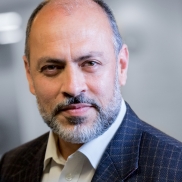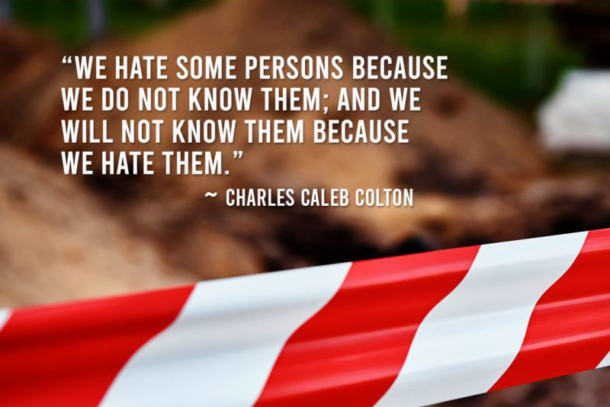Abid Jan
February 3, 2022
In the 1990s, youth violence connected to gangs and drug-related crimes was escalating to unprecedented levels in many neighbourhoods within the city of Boston. A record of 152 homicides and 1,000 aggravated assaults were reported in 1990. Religious organisations formed a coalition called TenPoint and changed the situation dramatically.
The number of homicides in Boston dropped dramatically from a high of 152 in 1990 to 31 in 1999. Between August 1995 and January 1998, Boston had not one teenage homicide victim. Homicides during the 1990s declined by 80 percent. Further, complaints against police dropped by over 60 percent during the same period.
Two and a half years with no teenage homicides looked very much like a miracle to most reasonable observers. The dramatic results that followed received national attention, and Rev. Rivers, one of the visible leaders of the TenPoint Coalition, would find himself on the cover of Newsweek in June 1998, and the lead story “God vs. Gangs” would chronicle the Boston Miracle.
The TenPoint Coalition and their Ten Point Plan for the 21st Century promote ten distinct action steps to help youth develop more positive and productive lifestyles:
1. Promote and campaign for a cultural shift to help reduce youth violence, both physically and verbally, by initiating conversations, introspection, and reflection on the thoughts and actions that hold back people individually and collectively.
2. Religious institutions develop a curriculum regarding the history of the most vulnerable demographics/communities, emphasising their struggles to help young people understand the purpose of their existence and how God remains active in all our lives.
3. Acknowledge and respond to the impact of trauma as a physical and emotional reality on the lives of young people and their families as a direct result of violence.
4. Build meaningful relationships with high-risk youth by recognising their reality on their terms and in their spaces.
5. Focus especially on connecting and rebuilding the lives of youth who have been stigmatised by mainstream society because of their race, religion, or colour or past mistakes and circumstances such as incarceration.
6. Provide youth advocacy and one-on-one mentoring for high-risk youth.
7. Provide gang mediation and intervention for high-risk youth with the goal of establishing cease-fires and building the foundation for active peace.
8. Establish accountable, community-based economic development projects in partnership with the social services sector that are organic visions of revenue generation and demystify the accumulation and power of money through financial literacy.
9. Build partnerships with social service organisations and other faith communities to help provide spiritual, human, and material support.
10. Provide ongoing training for individual religious organisations and a systematic leadership development program to create, maintain, and sustain community mobilisation.
According to Harvard scholars Jenny Berrien and Christopher Winship, the TenPoint Coalition created an umbrella of legitimacy for police to work under, whereby police were sheltered from public criticism while engaged in activities deemed by the ministers to be in the interest of the community and its youth. (Berrien and Winship, “Should We Have Faith in the Churches?” page 235)
This is a great example of how religious organizations can play a crucial role in shaping the behaviour of our youth. According to Robert D. Putnam:
“Houses of worship build and sustain more social capital—and social capital of more varied forms—than any other type of institution in America. Churches, synagogues, mosques, and other houses of worship provide a vibrant institutional base for civic good works and a training ground for civic entrepreneurs.
Nearly half of America’s stock of social capital is religious or religiously affiliated, whether measured by association memberships, philanthropy, or volunteering.” (Also see Robert D. Putnam et al., Better Together: Report of the Saguaro Seminar).
Crime Prevention Ottawa compiled important information about faith-based approaches to Youth Gang Prevention in 2009.
As guns and gangs remain a high priority issue in Ottawa and hate crimes are rising, it is time for us to recognise that churches, synagogues, mosques, and other houses of worship collectively represent one of the few prosocial institutions that remain within proximity of most adolescents, their families, and their peers.
Research has confirmed that these religious institutions can play an important role in promoting the health and well-being of youth. As police and decision-makers consider strategies to reduce gang activity and crime, it is essential for such deliberations to seriously and intentionally consider the role of religion and religious institutions, and their capacity building needs to be fulfilled in partnership and collaboration with the mainstream social services sector in implementing, developing, and sustaining multifaceted approaches.
Faith-based organisations cannot apply for community development funding from the City and other funders. The reality is that many faith-based organisations, especially those located in some of our most disadvantaged communities, are ready and willing to work with the funders and social services partners in playing a more intentional role in combating hate crimes and violence.
Unfortunately, many of these groups still lack organisational management capacity and program design and delivery skills and feel marginalised by the government and funding institutions.
It is necessary for us to actively pursue the involvement of faith-motivated individuals and organisations in our preventative work. From after-school programs for disadvantaged youth to public/private partnerships that bring together mainstream secular and religious groups/organisations to tackle social problems, any strategy will be needlessly incomplete unless the power of religion and religious communities is integrally involved.
*~*~*~*~*~*~*~*~*
Disclaimer: The ideas, views and opinions expressed in my LinkedIn posts and profiles represent my own views and not those of any of my current or previous employer or LinkedIn. Also, any and all comments on my posts from respondents/commenters to my postings belong to, and only to, the responder posting the comment(s). I am not responsible or liable for any such comments.





Comments
drover sointeru
Great post. I am facing a couple of these problems.